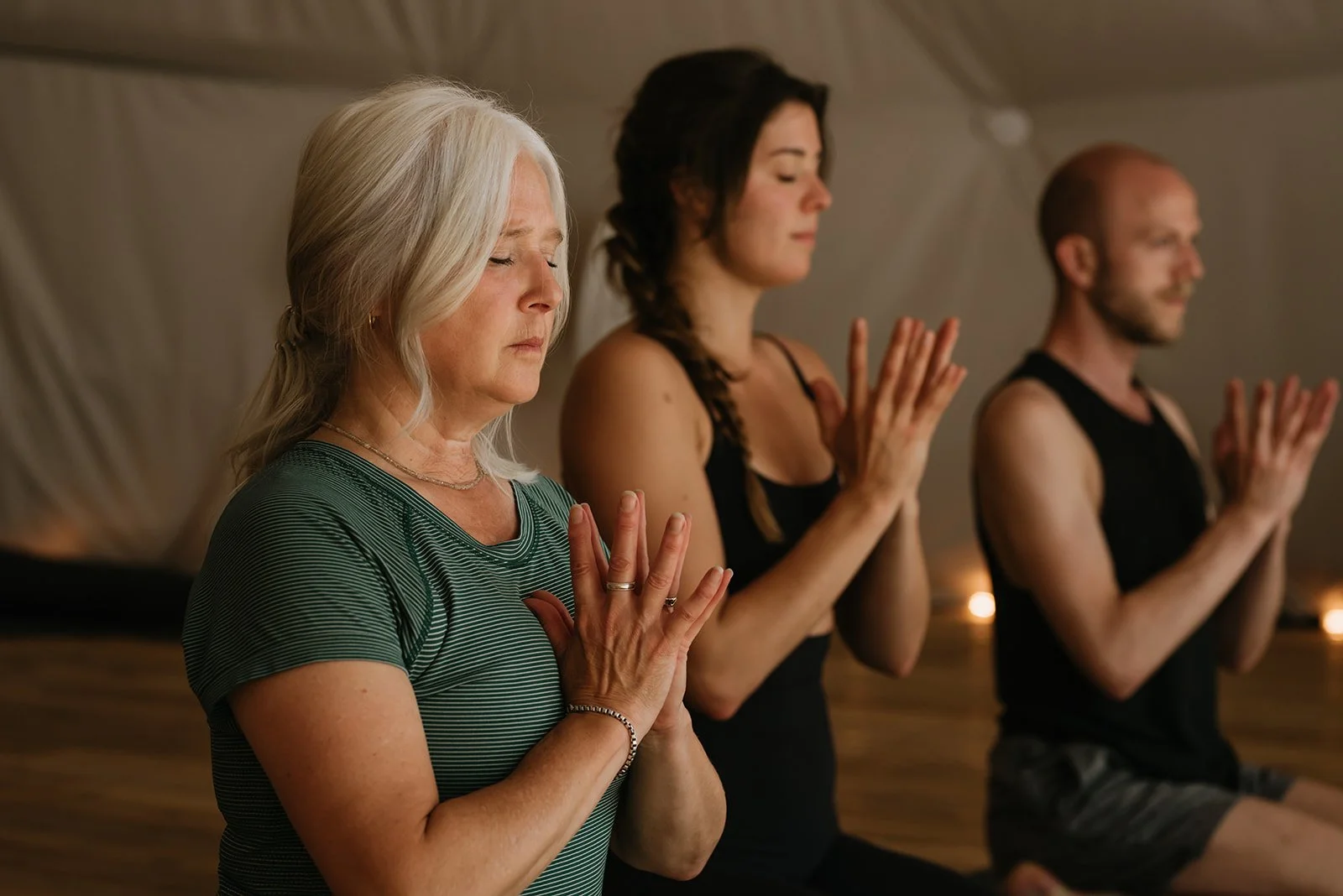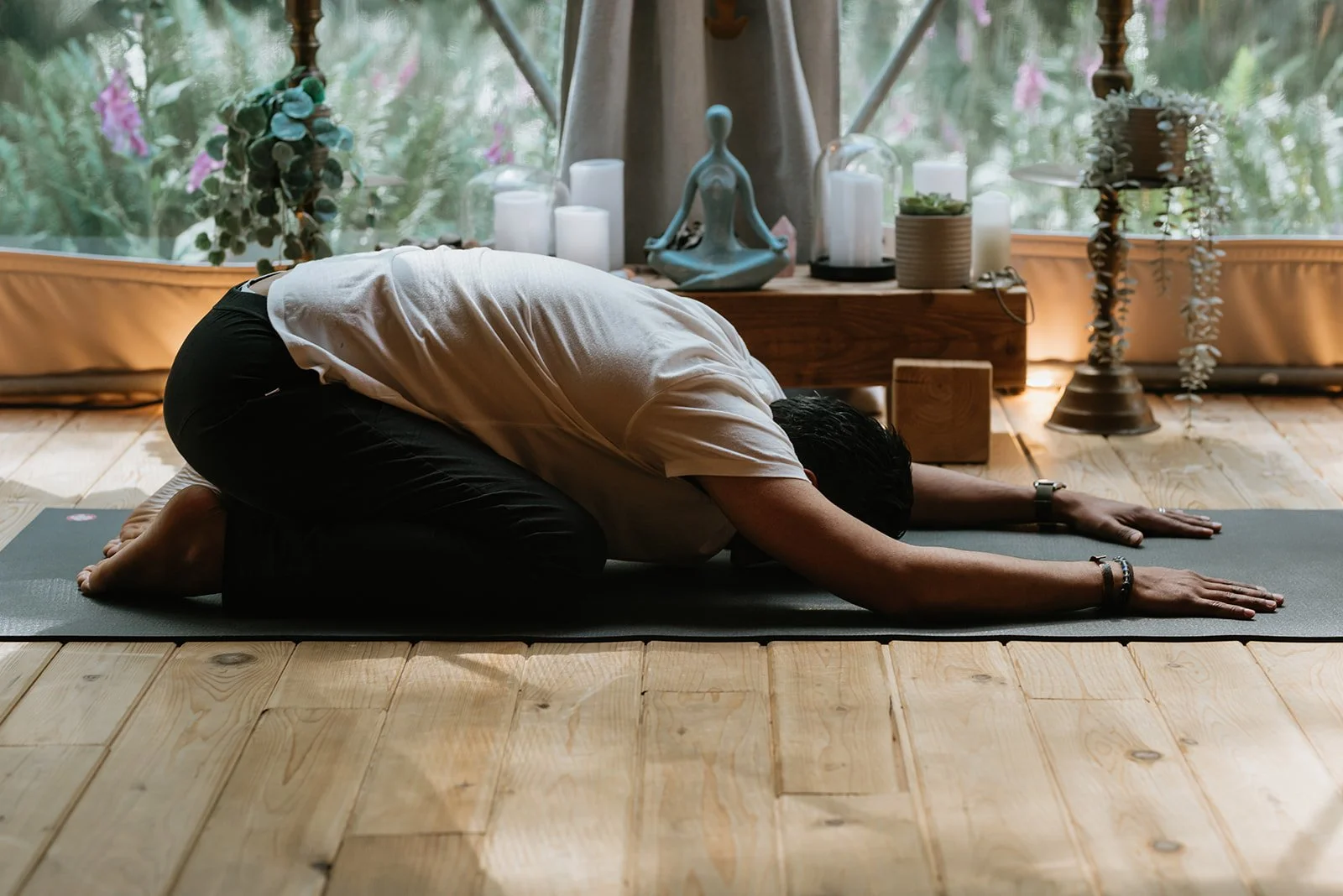SOMATIC PRACTICES From Our YOGA Retreat centre on Bowen Island, BC
At Nectar Yoga Retreat, many guests share that what feels most challenging in life is not the presence of change itself, but the unpredictability of it. Change can arrive as welcomed opportunities or unsettling disruptions. Either way, it demands a kind of flexibility that isn’t always natural or comfortable. Yoga, breathwork, and contemplative practice offer tools to help us stay steady when the ground shifts.
Nectar Retreat is nestled in a temperate rainforest in the heart of Bowen Island, just a 20 minute ferry ride from Vancouver, and has been a place for people to pause, reset, and learn practices that make transitions feel less overwhelming. Recognized by the New York Times and Condé Nast Traveler as one of the leading wellness retreats in British Columbia, Nectar brings together teachers and seekers who understand that resilience is something we can practice and not just hope for.
Why Meeting Change With Body and Breath Works: Vagus Nerve and Stress Adaptation
On Bowen Island, November signals a true turning. The last leaves release to the forest floor, the daylight continues to shorten, and the stillness of winter edges closer. This seasonal threshold mirrors the changes we face in our personal lives: some invited, others resisted. Neuroscience suggests that how we frame transitions strongly shapes our stress response, or another way of putting it, those who approach change with curiosity rather than fear are more likely to adapt well.
Yoga helps us meet our edges because it asks us to linger in the spaces where comfort ends and growth begins. On the mat, this might mean holding Half Moon Pose a breath longer than feels easy, or steadying the mind when balance falters. Each posture becomes a rehearsal for change: we encounter instability, notice the body’s instinct to tense or retreat, and practise staying present instead of fleeing.
Yoga doesn’t remove the edge; rather, it teaches us to stand there with steadiness, breath by breath, until what once felt threatening begins to feel navigable.
Breathwork reinforces this lesson. Techniques like Ocean’s Breath (how to below) remind us that even when the posture feels demanding, we always have access to a calm, regulating rhythm. Activating the vagus nerve through deep, slow breathing supports the parasympathetic nervous system, helping the body shift from stress to restoration. One study shares that even a single session can improve vagal tone and reduce anxiety.
Over time, this pairing of physical challenge with mindful breathing rewires our stress response; instead of collapsing or hardening against change, we practise curiosity. We can ask, “What happens if I stay, breathe, and be flexible here?”
This month, we invite you to explore practices that strengthen both body and breath, giving you tools to meet transitions with stability, openness, and resilience.
Somatic Stretching and Nervous System Practices for Adapting to Change
Half Moon Pose (Ardha Chandrasana)
Why It Matters:
Half Moon Pose embodies adaptability. Balancing on one leg with the torso and arm extended, the posture requires both grounding and expansion. Research shows that balance postures in yoga can improve not only stability but also cognitive adaptability, supporting our ability to remain steady under pressure.
How to Practise:
Begin in Triangle Pose, right leg forward.
Bend into the front leg, place right hand or block a few inches in front of the foot.
Lift the back leg parallel to the ground, extending the top arm upward.
Gaze can be steady on the floor or lifted skyward.
Eagle Pose (Garudasana)
Why It Matters:
Eagle Pose wraps the limbs tightly, building focus and concentration. It symbolizes containment, which mirrors the skill of drawing inward during uncertain times. Studies suggest that practices requiring mindful muscular engagement may reduce stress by stabilizing your system and improve mood.
How to Practise:
From standing, cross one thigh over the other and bend deeply into the knees.
Wrap the arms at the elbows and wrists, palms pressing.
Hold for 5–10 breaths, then switch sides.
Skandasana (Side Lunge)
Why It Matters:
This lateral lunge cultivates strength in the legs and openness in the hips. Its dynamic nature models adaptability by shifting weight from one side to the other with awareness. It also helps us (literally) practice moving fluidly between different states, reminding us that stability often comes through mobility.
How to Practise:
From a wide-legged stance, bend into one knee while extending the other leg long.
Keep both feet grounded, chest open.
Place hands together in prayer.
Shift from side to side, synchronizing with breath.
Ocean’s Breath (Ujjayi Pranayama)
Why It Matters:
Sometimes called the “resilient breath,” this breathwork exercise creates a gentle ocean-like sound at the back of the throat. Research in the physiology of long, deep breathing shows that slow, diaphragmatic breathing reduces cortisol and enhances vagal tone, both essential for managing stress during transitions. What the ancient yogis knew pranayama could do in supporting the autonomic nervous system science is only beginning to understand!
How to Practise:
Place hands on lap or belly.
Inhale and exhale through the nose with a slight constriction at the back of the throat.
The breath should sound like a soft ocean wave.
Continue for 1–3 minutes, noticing the nervous system settle.
How Do You Build Resilience? Embrace Change as A Daily Practice
Adapting to change doesn’t only happen on the mat. It also lives in small gestures: noticing when your body tenses before a hard conversation, choosing to exhale before you respond, or allowing yourself to shift plans without judgment. Neuroscience calls this neuroplasticity, the brain’s ability to rewire itself through repeated practice. In contemplative traditions, it is simply called presence. It doesn’t ask for perfection, but a willingness to sit with things, to come back to it, again and again.
This November, let your practice be about cultivating steadiness in motion, so that life’s inevitable transitions feel less like disruption and more like flow. For a fuller experience, read our blog post about releasing physical and emotional stress.
About Nectar Yoga Retreat on bowen
Set beneath towering conifers on Bowen Island, Nectar Yoga Retreat offers soulful accommodations, nourishing vegetarian meals, and thoughtfully curated yoga and meditation retreats. Together with our sister brand, Mist Thermal, a favourite spa on Bowen, we have become a trusted destination for wellness retreats in British Columbia, welcoming guests from Vancouver, Seattle, and beyond to experience rest, renewal, and a deeper relationship with practice.
Works Cited
https://www.sciencedirect.com/science/article/pii/S0965229921000315
https://www.sciencedirect.com/science/article/abs/pii/S0306987706001666
https://www.health.harvard.edu/mind-and-mood/yoga-for-better-mood-and-memory
Disclaimer: The practices shared in this blog are for informational purposes only and are not a substitute for medical advice. Please consult with a healthcare provider before beginning any new wellness routine, especially if you are pregnant, have health concerns, or physical limitations. Participation is voluntary and at your own risk.
















